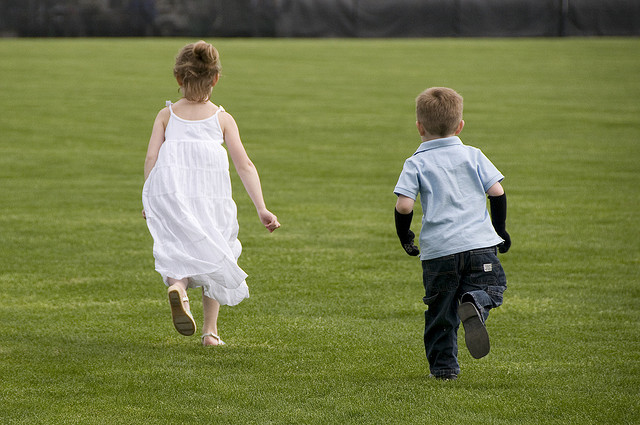Teaching Through Play
What’s a child’s favourite thing to do? PLAY!
Here are four questions I ask myself while planning activities that use play to teach in early childhood classes. They can be easily adjusted for use with older children as well.
Open or closed activity?
When planning an activity in the classroom, I always ask myself if there is a way to make this open-ended so students can play and explore for an infinite amount of time. When an activity never ends, it allows students to practice until mastery rather than just until completion. Open-ended activities feel like play and can be used over and over. They are ideal for introducing ideas and concepts that need a lot of practice. Closed activities, on the other hand, give me opportunities for assessment since they show how close students are to mastery.
Topic: Matching quantity to numerals
Open Activity: Play a game with flash cards matching quantity to numerals. Students have to match the card with the correct quantity to the numeral. When students finish they can mix the cards and repeat the activity. For students close to mastery, see how fast they can do the activity. This works great in a small group activity or during free play time.
Closed activity: Do a worksheet matching quantity to numerals. Students draw a line matching the quantity of drawn objects to the correct numeral. Once students are finished they can turn in the activity. This works great for an assessment or homework.
Student or teacher directed?
In a typical early education classroom, I could always use more adults. That means while planning activities I have to be strategic in what kind of activities require an adult’s support and which activities students can practice on their own. I plan teacher-directed activities to introduce a new concept or idea while student-directed activities allow students to practice on their own.
Topic: Family vocabulary
Teacher-directed: Students draw and label a family tree. With teacher-guidance, students will draw different members of the family and label each person. Teachers will provide assistance in organising the paper (children on the bottom, grandparents on the top) as well as provide vocabulary words to copy for the appropriate family members.
Student-directed: Use memory with family vocabulary. After students have been introduced to family vocabulary and have a basic understanding of rules, they can play a game of memory with family members as the cards. Pairs of cards with pictures and/or words are placed face down on the table. Students take turns flipping two cards to find matches while saying the words.
Individual or group?
Social skills are important to practice in the early years. I try to plan activities that require students to interact while I am providing learning beyond the academic concepts. Then I use individual activities to allow students to develop their own reflection skills and demonstrate their learning.
Topic: Science activity–what melts ice?
Group activity: As a group, students must find fun ways to melt ice. As a whole class the teacher may ask students for ideas about how to make ice melt quickly. Then the teacher can divide students into groups and allow each group to choose an appropriate method of melting ice (i.e., rubbing it in their hands). Students will pass around the ice cube rubbing it until their hands are too cold, then passing it to the next child. This practices taking turns, observations, and learning new science concepts.
Individual activity: After seeing ice melting, students draw a picture of what happened in their journals so they can remember.
Creative or directed?
Art is always a fun activity in the classroom! It’s messy, creative, and allows students to develop crucial fine motor skills. While thinking of art activities, I first decide whether an open-ended (creative) or directions-based activity is called for. Open-ended, creative projects give students the opportunity to experiment with new materials and develop ideas from start-to-finish. Directions-based projects allow students to develop skills they might not choose on their own and to practice following instructions. Both are important skill sets in the early education classroom; the key is finding the right balance.
Topic: Making penguins
Creative: In an art station, the teacher will provide many materials such as coloured paper, paint, glue, wiggly eyes, and felt. The teacher will also post pictures of penguins. During free play time, the students can look at the pictures of penguins as they model their own creations.
Directions-based: The teacher will model how to create a penguin by cutting out pieces of paper, gluing them together, and adding other parts such as eyes and feet. The students will follow the teacher’s instructions step-by-step to create similar projects.
Overall, in an early education classroom playing and learning walk hand-in-hand. The process of intentionally planning activities is the first step in engaging students in playful learning. Although all types of activities can be positive in the classroom and encourage learning, the more free-choice, student-based, interactive and creative the activity, the more playfully engaged the student will be. My general rule of thumb is finding variety by mixing up the types of activities so that at least one activity on the topic will engage each of my students.
Sarah Trussell, M.Ed.
Elementary Principal, early childhood teacher
El Camino Academy, Colombia
For more ideas to use in early education classrooms, check out the Early Childhood Education group on Yammer.






